It is no secret that plants and nature contain the answers to cure perhaps the totality of ailments that affect the physical body.
One of these ailments is obesity, the difficulty that people often have to reach an optimal body weight, even when they do not eat too much.
Losing weight is a science and like any science, it takes time to master.
Eliminating fat and excess fluid that accumulates in the body and causes overweight is not an easy task, especially when you do not have enough knowledge about the different aids that nature puts at your disposal for this purpose.
Within the range of plants that are known to control body weight, there are 8 plants unknown to most people that, when combined in the right proportions, help control and stop obesity which is one of the major diseases faced by humans almost since the beginning of the last century.
Perilla or Perilla Frutescens
Perilla Frutescens is a plant of the Lamiaceae family, like rosemary, mint, sage, or marjoram. Its appearance may remind the nettle, although these two plants are not at all related.
In cooking and gastronomy, it is known by the Japanese name of the plant, Shiso, since it is in this Asian country where this plant has achieved certain culinary renown. Other popular names are Deulkkae, in Korean, and Silam, the name given to this species in India and Nepal.
Some of the properties and benefits of Perilla Futescens are the following:
Perilla is noted for being very effective in the treatment of asthma and many types of allergies. Being a powerful bronchodilator, it allows greater absorption of oxygen, which helps to overcome asthmatic crises and in general, all the problems caused at the respiratory level due to allergies that occur against various substances found in the air and the environment. To date, its antihistamine, anti-inflammatory, and immunomodulatory properties are well known, as it contributes to the body to block histamine, the imidazole amine involved in the immune system responses that are activated when the body recognizes an allergenic component, such as plant pollen and causes an allergic reaction.
Similarly, Perilla is a plant recognized as an appetite suppressant, able to dilate blood vessels and cause a slight increase in body temperature, which causes the rapid breakdown of fats which are eliminated through body waste such as feces and urine.
The antidepressant effect of Perilla Frutescens essential oil in chronic depression has also been investigated, as well as its use to treat certain types of stress.
On the other hand, the nutritional value of perilla is unquestionable. Its great contribution of calcium, iron, carotenes, and vitamin C, as well as natural antioxidants that help to maintain an adequate system of defenses in the body, make it a plant of great help to maintain a perfect state of health.
Kudzu or Pueraria Lobata
Kudzu is an ornamental plant native to Southeast Asia. It is a climbing and invasive legume, with huge roots that once dehydrated produce a very white starch powder. It is a natural thickener that has been used since ancient times in cooking and also as a medicine, due to its great medicinal properties.
In cooking and baking, it is used to provide texture. If dissolved in water, broth, or juice and boiled over low heat, stirring constantly for five minutes, it acquires a gelatinous consistency that is used to prepare soups, creams, stews, fillings, sauces, or jams. Thanks to its neutral flavor, it combines very well with sweet and salt and goes well with miso and soy sauce. One teaspoon of kudzu is equivalent to one tablespoon of corn starch.
Nutritionally it provides carbohydrates, fiber, minerals, and flavonoids. In its composition, we find saponins, isoflavones, phytochemicals such as coumarins and daidzein, which are anti-inflammatory and antimicrobial molecules.
Given the versatility of Kudzu, it is used among other things for the following:
Intestinal and digestive disorders. It balances the intestinal flora, restores peristaltic motility, and regenerates intestinal villi. It is useful in case of constipation, diarrhea, gastroenteritis, irritable colon. It improves the absorption of nutrients and activates the immune system. In ulcers or heartburn, it protects and heals the internal mucosa. It regulates digestion and favors the decomposition of fats into simpler molecules of easy elimination, thus helping the rapid loss of body weight.
Cardiovascular diseases. It acts as an antihypertensive, reduces triglycerides and LDL in plasma, and increases vasodilation. It reduces anxiety, especially in those people who only calm it by eating compulsively, which results in a decrease in calorie consumption, which ultimately results in rapid weight loss.
Brain disorders. Its vasodilator action promotes blood flow to the brain, which helps reduce stress and insomnia. It is a very useful plant in the treatment of headaches and migraines. It improves cognitive ability in people with symptoms of senile dementia or Alzheimer's disease. Its vasodilator effect improves vision and protects the entire cardiovascular system.
Respiratory disorders and infectious processes. It soothes the lung mucosa and is very useful in treating colds, coughs, bronchitis, asthma, and allergies with rhinitis. In the case of flu, it reduces fever, promotes perspiration, and calms bronchial congestion and associated muscle aches.
It is also used in alcoholic detoxification cures. The extract of its flower relieves the effects of a hangover, detoxifies the liver, and prevents cirrhosis. For its anxiolytic capacity, it is also useful in the detoxification of other drugs and tobacco.
Its high fiber content slows the absorption of glucose which reduces weight gain caused by excessive accumulation of body fat.
Holy Basil or Ocimum Sanctum
Holy Basil is a plant that provides countless benefits studied for thousands of years in traditional Ayurvedic medicine, plus it is a plant that is easily grown at home.
Among the widely known benefits of Holy Basil are the following:
Attacks infections. The essential oil of basil has antibacterial, antifungal, and antiviral action and treats symptoms of colds, flu, and other viral infections.
Its aroma repels mosquitoes and other disease-carrying insects and helps reduce discomfort from insect bites when its leaves are rubbed on injured skin.
With 2 or 3 teaspoons of fresh leaves cooked in water for 5 or 6 minutes, a medicinal infusion is prepared that makes the body feel pure and light.
Reduces stress. Holy Basil is an adaptogenic plant that helps to regain balance in stressful situations. It is a natural anxiolytic that reduces stress and anxiety without the side effects of traditional medicines used for that purpose.
Experts who have studied the medicinal properties of the plant recommend taking 500 mg of dry extract per day to combat anxiety. The origin of stress can be emotional, but Holy Basil also helps when the cause is physical overload or environmental pollution.
By helping to eliminate stress, it increases energy levels, which is why high-performance athletes often consume this plant to increase endurance, physical performance, and pain tolerance.
Prevents inflammation. The essential oil and extract of Holy Basil reduce the reaction to environmental allergens and reduce edema in inflamed areas, favoring the elimination of retained fluids in the body, according to a study published in the International Journal of Current Microbiology and Applied Sciences.
Its anti-inflammatory properties make it an indisputable ally in the treatment of diseases such as arthritis and fibromyalgia.
Regulates blood sugar. Normally, people with obesity problems have serious blood sugar problems. Through various studies, it has been shown that Holy Basil is an effective complementary treatment for diabetes, helping to regulate blood sugar levels and preventing people with diabetes from becoming insulin-dependent.
Protects the heart. Adding Holy Basil leaves as a condiment to the dishes we prepare, reduces the levels of bad cholesterol (LDL) in the blood, which helps prevent clogging of the arteries and veins and thus protects the entire circulatory system, especially the heart, which is the most valuable muscle we have.
Reduces the risk of cancer. The phytochemicals present in Holy Basil leaves are potent antioxidants that help prevent the onset and development of certain types of skin, mouth, liver, and lung cancers.
Amino acids such as ornithine and choline and other compounds such as eugenol, rosmarinic acid, apigenin, and carnosic acid, protect cells and prevent the development of cancer cells in the body.
Holy Basil is undoubtedly one of the most complete plants for health care that has many medicinal uses that only today, modern science is beginning to discover.
White Korean Ginseng or Panax Ginseng
The White Korean Ginseng is widely known by elite athletes who turn to it as an inexhaustible source of energy as it prevents tiredness and fatigue, especially in those sports of long breath as marathons or triathlons.
But it does not stop there, since White Korean Ginseng offers many other benefits among which are the following:
It helps to combat the feeling of fatigue and tiredness, allowing those who practice sports, to perform much longer and more intense workouts.
It improves mood and reduces stress. It is a natural relaxant that stimulates the production of hormones such as serotonin, which helps to remain cheerfully and optimistically in front of life.
It increases physical strength and decreases the sensation of pain that is produced by the accumulation of lactose when the body is subjected to a high load of physical effort.
It accelerates the muscle recovery process, promotes the formation of new muscle fibers, to repair those that are broken when the body is subjected to demanding physical activity.
It prevents anemia, improves digestion and metabolism, and helps to maintain lean muscle always low in fat, which results in the possibility of reaching an optimal body weight.
Regulates blood pressure and therefore protects the entire circulatory system. In addition to this, it is worth mentioning that it is a powerful vasodilator that favors blood irrigation and is therefore highly appreciated for the benefits it brings to the male reproductive system, allowing strong and lasting erections and thus favoring sexual relations in those with serious problems of impotence, many of them caused by obesity.
Reduces the sensation of appetite and food cravings. It produces a feeling of satiety, which makes people need to consume much less food than they usually consume.
White Korean Ginseng is a powerful ally that helps reduce fat levels in the body and also stimulates the practice of sports, which is crucial for those who want to lose weight and simply do not practice any physical activity because they do not feel their body in the appropriate conditions to carry out some kind of physical effort.
Amur Cork Bark or Phellodendron Amurense
Amur Cork Bark is a species of medicinal plant of the Rutaceae family and is one of the 50 fundamental herbs of traditional Chinese medicine.
Although it is native to China and Japan, Vietnam is the world's largest producer of this species. Amur Cork Bark is a tree that grows up to 12 m tall when grown in humus-rich soils with summer moisture. Its bright green leaves with 5 to 11 leaflets have an unusual heart-shaped base and a pungent aroma and its 5-petaled flowers, depending on whether male or female, produce berries above the foliage in dense clusters.
Among the main properties of Amur Cork Bark are the following:
It is useful in the treatment of meningitis, bacillary dysentery, pneumonia, tuberculosis, and liver cirrhosis.
It is an effective regulator of the digestive system, serving to treat abdominal pain, diarrhea, gastroenteritis, and urinary tract infections. It has proven to be effective against diarrhea caused by bacteria.
It protects eyesight from diseases such as ocular trachoma.
It is an effective ally against leishmaniasis, which is a tropical disease transmitted mainly by the phlebotomine sandfly.
It protects the cartilage that separates the joints, thus preventing progressive osteoarthritis, which improves body mobility, giving a feeling of lightness, flexibility to the body.
It is an important potential chemopreventive agent for lung cancer and pancreatitis.
It can inhibit prostate contractility suggesting that it may be useful in the treatment of urological disorders caused by urethral obstruction of the prostate such as benign prostatic hyperplasia.
It helps people with overweight problems, regulating blood cholesterol and helping to easily eliminate abdominal fat, as well as the fluid that is retained at the subcutaneous level.
Amur Cork Bark contains a variety of biologically active substances, including flavonoids such as diosmin, alkaloids such as berberine, yatroriccine, palmatine, saponins, and coumarins essential for regulating various chemical processes within the body, which allow maintaining an optimal state of good health.
Propolis
Propolis is a substance made by bees from the resin of plants and trees such as willow, pine, and fir, which is mixed with wax, pollen, and the bees' saliva and serves to protect the entire hive from any type of infection.
Although Propolis is a powerful medicine that has been known since ancient times, it has recently gained much popularity due to the appearance of viruses and infections still without a cure, which has "upside-down" medical science that is, as always, in search of answers.
There has been a lot of talks lately about immunological diet, how to strengthen our defenses or how to synthesize vitamin D during the confinement to which humanity has been subjected since the beginning of the 2020 year.
Well, as one of the main allies of health, we find Propolis, which has among its main properties the following:
It fights flu and colds. Thanks to its antibacterial, antiviral, and anti-inflammatory properties, Propolis is an effective ally to treat flu and colds. In essence, Propolis acts as a natural barrier that prevents external agents such as viruses from entering the body through the respiratory tract.
Propolis contains vitamins, minerals, organic and phenolic acids, aromatic aldehydes, and flavonoids necessary to help in the first symptoms of these conditions and promote the normal functioning of the respiratory system.
Propolis has been used since ancient times to treat catarrh of the upper respiratory tract, common cold, flu, sinusitis, otitis, laryngitis, bronchitis, bronchial asthma, chronic pneumonia, or pulmonary tuberculosis.
It soothes the throat and reduces aphonia, improving the natural condition of the voice. In the case of aphonia and dysphonia, which are the two most common voice-related problems, Propolis restores the affected vocal cords, even in severe cases of voice impairment or where there has been damage to the larynx caused by previous illness.
It purifies oily skin and helps in the treatment of sores or ulcerations, wounds, contact dermatitis, and chilblains that tend to appear especially in colder climates.
Its regenerating properties make it a great ally to soften and eliminate marks and deep scars on the skin.
In the case of sensitive skin, it becomes a protective shield against external agents, maintaining its hydration and preventing reddening due to the action of sunlight.
Soothes irritated scalp avoiding dandruff, dryness, itching, flaking, and general scalp pain when sensitive or irritated.
Relieves digestive problems related to the stomach and colon by regulating digestion and favoring the elimination of toxins accumulated in the body.
It fights Helicobacter Pylori bacteria, which is responsible for the formation of gastric ulcers. It reduces the pain caused by gastritis, diverticulitis, or Crohn's disease and helps in general to restore the digestive system as a whole.
Quercetin or Quercetum
Although Quercetin is not very well known, it is a pigment found in many plants, vegetables, and fruits and its properties have many health benefits, while it is very useful in preventing various diseases.
Quercetin is a phytonutrient that humans are not able to produce but we can access easily as it is found in common foods such as onions, grapes, apples, citrus fruits, broccoli, kale, tomatoes, or red wine, among other foods.
Among the main properties of Quercetin are the following:
Powerful antioxidant. Quercetin stands out for its antioxidant properties that protect the human body from free radicals, those unstable molecules that can increase the risk of diseases such as cancer and accelerate aging. As has been demonstrated in the laboratory, Quercetin has an antioxidant power superior to that of vitamins C and E or beta-carotene.
Reduces inflammation. When there is a process of inflammation in the body, this is due to the body's natural response to stress and injury and usually helps the body to heal. However, chronic inflammation, when not treated in time, can progressively deteriorate health until it reaches irreversible states.
In this sense, Quercetin helps prevent chronic acute inflammation and decreases the risk of painful diseases such as arthritis.
It prevents neurological diseases. Quercetin can help prevent neurodegenerative diseases such as Alzheimer's or Parkinson's disease. The oxidative stress that the body faces daily, contributes to the development of neurodegenerative diseases that appear when there is an imbalance of free radicals in the body. As Quercetin is a substance that fights free radicals, it prevents the appearance of these diseases.
It relieves allergy symptoms. Quercetin is an effective antihistamine that helps treat ailments such as asthma and bronchitis.
Prevents multiple infections. Quercetin is an effective antibacterial and acts especially against bacteria related to the digestive system, skin, respiratory system, and urinary system. In addition to the above, it helps to fight some viruses, among which is the adenovirus.
It decreases the risk of contracting cancer. Quercetin contains anti-cancer properties that help prevent the spread of cancer cells and tumor growth.
A diet rich in flavonoids such as Quercetin helps regulate the body's metabolism, thus allowing the body to remain in optimal condition, reducing body weight, regulating blood sugar, cholesterol, and triglyceride levels, and generally helping to protect the body against oxidative wear and tear that occurs with increasing force as the years go by.
It lowers high blood pressure. According to a study by the American Heart and Stroke Association, consuming Quercetin is an effective way to lower blood pressure. In turn, people with overweight problems who took Quercetin had lower levels of bad cholesterol in the blood, as well as reduced systolic blood pressure, which ultimately leads to the protection of the heart and the entire circulatory system.
Oleuropein or Olea Europaea
Known as Oleuropein, it is the most effective polyphenol known to date to help reduce bad cholesterol and blood pressure and protect the body against oxidative damage.
The olive tree produces Oleuropein in abundance both in its leaves and in the olive itself, which is nowadays extracted in a safe way that preserves all its properties.
Olive leaf extracts are known primarily for their blood pressure lowering effects, however, the most recent studies reveal that their health benefits extend much further.
Among the many benefits of Oleuropein are the following:
Anti-inflammatory and antioxidant properties. Oleuropein fights atherosclerosis, diabetes, neurodegenerative diseases, and arthritis, thus favoring the entire musculoskeletal system.
It regulates blood pressure. Some studies show that Oleuropein significantly lowers high blood pressure. These effects are much more evident when Oleuropein is taken before the body develops hypertension. In short, Oleuropein is very effective in treatments to prevent and treat high blood pressure.
Improve arterial health. Blood pressure is only one measure of Cardiovascular Health. Arterial Health is equally important. Oleuropein extracts combat endothelial dysfunction on multiple levels, increase the production of nitric oxide, a signaling molecule that helps relax blood vessels and prevents oxidation of LDL cholesterol, which is one of the changes seen in the body when atherosclerosis occurs.
The polyphenol compounds found in Oleuropein have proven extremely useful in helping to prevent the formation of arterial plaques and therefore to reduce the risk of heart attacks and strokes.
Diabetes prevention. The diabetic and pre-diabetic state of chronically elevated blood sugar imposes substantial oxidative stress on the entire body. Thanks to the intake of Oleuropein, the amount of glucose in the blood is reduced to normal levels, thus limiting the damage caused by the inevitable blood sugar spikes that still occur during the normalization process.
It is neuroprotective. Oleuropein helps protect the brain and central nervous system from the destruction caused by stroke and age-related degenerative diseases such as Alzheimer's and Parkinson's disease. It does this by suppressing inflammation and reducing damage caused by oxidative stress.
Supports the immune system. Oleuropein improves the functioning of the immune system in multiple ways. Oleuropein's antiviral properties provide full coverage against the major viruses responsible for upper respiratory tract infections during flu season.
A fabulous antioxidant. Oleuropein contains over 20 different antioxidant polyphenols. Each of these is effective against different sets of free radicals that are responsible for cell aging. Therefore, the total antioxidant effect of the olive plant extract is quite significant. As a natural free radical scavenger, Oleuropein is one of the most important antioxidants known today.
It regulates metabolic balance. It is not surprising that in those countries where olive oil is consumed more, obesity and overweight are not a problem and this is because the Oleuropein present in the olive fruits, eliminates the free radicals that damage the tissues, that alter the metabolism and that allow the accumulation of fats that are difficult to be absorbed and eliminated from the organism.
The continuous intake of these essential nutrients for the body helps to restore the harmonic balance that allows good health to remain in our body.
Preventing obesity and all associated diseases is today not only a possibility but a necessity, given the levels of stress and sedentary lifestyles in which modern society lives.
Good health is much more within reach than we tend to believe.
Bibliographic references:
- Perilla frutescens (L.) Britton — The Plant List. www.theplantlist.org
- “Deulkkae” [deulkkae]. Korea Biodiversity Information System. National Arboretum.
- Perilla frutescens var. crispa (Thunb.) H.Deane — The Plant List. www.theplantlist.org
- Duff, Diana. “Plant of the Month: Shiso”. West Hawaii Today.
- Igarashi, Miho; Miyazaki, Yoshifumi (2013). “A Review on Bioactivities of Perilla: Progress in Research on the Functions of Perilla as Medicine and Food”. Evidence-based Complementary and Alternative Medicine : eCAM 2013. ISSN 1741-427X. PMC 3844277. PMID 24319488. doi:10.1155/2013/925342.
- Perilla frutescens. Royal Botanic Gardens, Kew: World Checklist of Selected Plant Families.
- Rezvani, A; Overstreet, David H; Perfumi, Marina; Massi, Maurizio (2003). «Plant derivatives in the treatment of alcohol dependency». Pharmacology Biochemistry and Behavior 75 (3): 593. doi:10.1016/S0091-3057(03)00124-2.
- Keung WM, Vallee BL (febrero de 1998). «Kudzu root: an ancient Chinese source of modern antidipsotropic agents». Phytochemistry 47 (4): 499-506. PMID 9461670. doi:10.1016/S0031-9422(97)00723-1.
- Duke J. The Green Pharmacy, The Ultimate Compendium of Natural Remedies from the World's Foremost Authority on Healing and Herbs, 1997. Pp. 57; 281-282; 310.
- Li J, Wang G, Liu J et al. (dec 2010). “Puerarin attenuates amyloid-beta-induced cognitive impairment through suppression of apoptosis in rat hippocampus in vivo”. Eur. J. Pharmacol. 649 (1–3): 195-201. PMID 20868658. doi:10.1016/j.ejphar.2010.09.045.
- Kudzu root, a starchy white root native to Japan and China, has been used for in traditional Chinese medicine to reduce alcohol intake and hangovers.
- The flowers of Pueraria thunbergiana exhibit protective effects against ethanol-induced apoptosis in human neuroblastoma cells.
- "Kudzu - Encyclopedia of Alternative Medicine", 2008.
- USDA, Agricultural Research Service, National Plant Germplasm System. 2018. Germplasm Resources Information Network (GRIN-Taxonomy).National Germplasm Resources Laboratory, Beltsville, Maryland.
- Colmeiro, Miguel: «Diccionario de los diversos nombres vulgares de muchas plantas usuales ó notables del antiguo y nuevo mundo», Madrid, 1871.
- CABI Invasive Species Compendium
- Warrier, P K (1995). Indian Medicinal Plants. Orient Longman. p. 168.
- Kothari, S K; Bhattacharya, A K, et. al. (November/December 2005). “Volatile Constituents in Oil from Different Plant Parts of Methyl Eugenol-Rich Ocimum tenuiflorum L.f (syn. O. sanctum L.) Grown in South India”. Journal of Essential Oil Research: JEOR.
- Staples, George; Michael S. Kristiansen (1999). Ethnic Culinary Herbs. University of Hawaii Press. p. 73. ISBN 9780824820947.
- thaifoodandtravel.com Adventures in Thai Cooking and Travel.
- NIIR Board, National Institute of Industrial Research (India). Compendium of Medicinal Plants. 2004. National Institute of Industrial Research. p. 320. ISBN 9788186623800.
- Devi, P. Uma; y Ganasoundari, A.: “Modulation of glutathione and antioxidant enzymes by Ocimum sanctum and its role in protection against radiation injury”. Indian Journal of Experimental Biology, pág. 262-268, vol. 37, n.º 3, marzo de 1999.
- “Anti-cataract activity of Ocimum sanctum on experimental cataract”. Indian Journal of Pharmacology (30). 1998.
- R. Shanmuga (2012). «Lc-Ms Quantification of Rosmarinic Acid and Ursolic Acid in Theocimum Sanctumlinn. Leaf Extract (Holy Basil, Tulsi)». Journal of Liquid Chromatography & Related Technologies 35 (5): 634. doi:10.1080/10826076.2011.606583.
- Padalia, Rajendra C.; Verma, Ram S. (2011). «Comparative volatile oil composition of four Ocimum species from northern India». Natural Product Research 25 (6): 569-575. PMID 21409717. doi:10.1080/14786419.2010.482936.
- "Ocimum tenuiflorum". Royal Botanic Gardens, Kew: World Checklist of Selected Plant Families.
- Markin D, Duek L, Berdicevsky I, “In vitro antimicrobial activity of olive leaves”, Mycoses, Volume 46, Issue 3-4, pages 132–136, March 2003
- Serafini M, Laranjinha JA, Almeida LM, Maiani G, "Inhibition of human LDL lipid peroxidation by phenol-rich beverages and their impact on plasma total antioxidant capacity in humans", Journal Nutr. Biochem, Issue 11 pages 585-590, 2000
- Khayyal M.T. et al., “Blood pressure lowering effect of an olive leaf extract (Olea europaea) in L-NAME induced hypertension in rats” Arzneimittelforschung 52(11):797-802, 2002
- Manna C, Migliardi V, Gollino P, SCognamiglio A, Galletti P, Chiariello M, Zoppia V. ,“Oleuropein prevents oxidative myocardial injury induced by ischemia and reperfusion” Journal Nutr Biochem, Aug 2004;15(8):461-6 , 2004
- Bao J, Zhang DW, Zhang JZ, Huang PL, Lee-Huang S, “Computational study of bindings of olive leaf extract (OLE) to HIV-1 fusion protein gp41.“ FEBS Lett. 2007 Jun 12;581(14):2737-42. Epub 2007 May 21
- Jemai H. et al., “Lipid-lowering and antioxidant effects of hydroxytyrosol and its triacetylated derivative recovered from olive tree leaves in cholesterol-fed rats, Journal Agric Food Chem. Issue 56(8):2630-6, 2008
- Yamada K, Ogawa H, Hara A, Yoshida Y, et al, “Mechanism of the antiviral effect of hydroxytyrosol on influenza A virus including H1N1, H3N2, H5N1, H9N2” Antiviral Res. 2009 Jul;83(1):35-44. doi: 10.1016/j.antiviral.2009.03.002. Epub 2009 Mar 24
- Jemai H. et al., “Antidiabetic and Antioxidant Effects of Hydroxytyrosol and Oleuropein from Olive Leaves in Alloxan-Diabetic Rats” J Agric Food Chem, 2009 Oct 14;57(19):8798-804
- Vlassios Goulas, Vassiliki Exarchou Anastassios N. Troganis Eleni Psomiadouet al, “Phytochemicals in olive-leaf extracts and their antiproliferative activity against cancer and endothelial cells” , Molecular Nutrition & Food Research, Volume 53, Issue 5, Pages 600-608, 2009
- Poudyal H. Et al., “Olive Leaf Extract Attenuates Cardiac, Hepatic, and Metabolic Changes in High Carbohydrate-, High Fat-Fed Rats” J Nutr. 2010
- J. Munoz-Marin et al, “Cytoprotective effect of hydroxytyrosyl alkyl ether derivatives after oral administration to rats in a model of glucose-oxygen deprivation in brain slices.”, Journal of Agricolture Food Chem. 60(31):7659-64, 2012
- Castaner O. et al. “Protection of LDL from oxidation by olive oil polyphenols is associated with a downregulation of CD40-ligand expression and its downstream products in vivo in humans”, Journal Clin Nutr. 2012 Mar 21.
- M. Kostomoiri, A.Fragkuoli, M. Sagnou et at, “Oleuropein, an Anti-oxidant Polyphenol Constituent of Olive Promotes α-Secretase Cleavage of the Amyloid Precursor Protein ”, Cell Mol Neurobiol., 33(1): 147-54, 2013
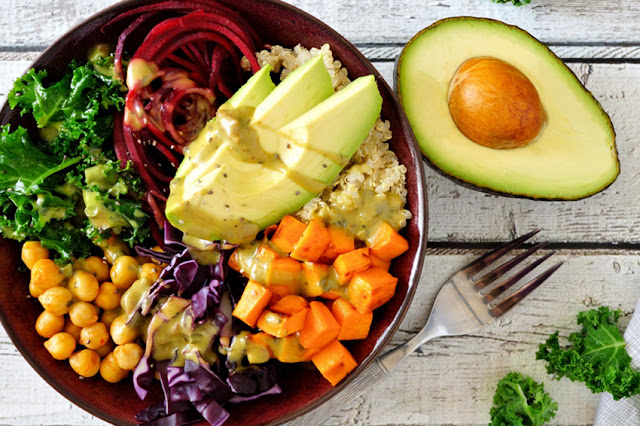
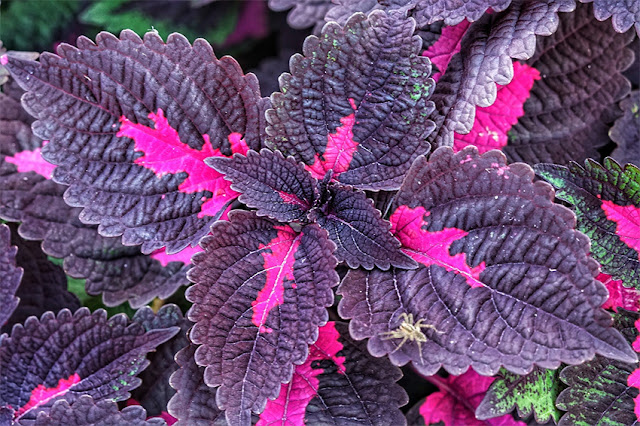
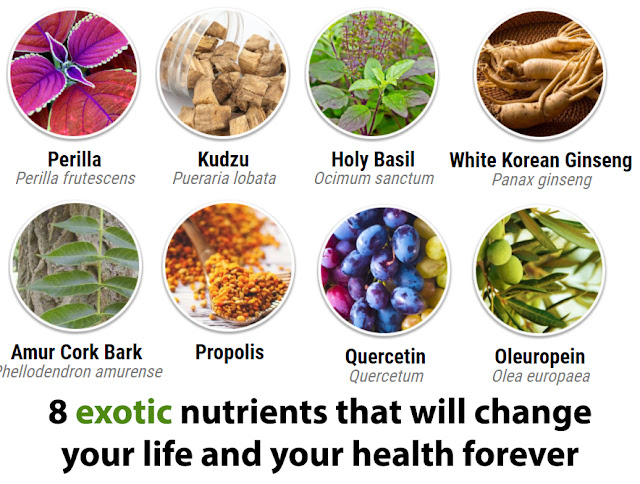





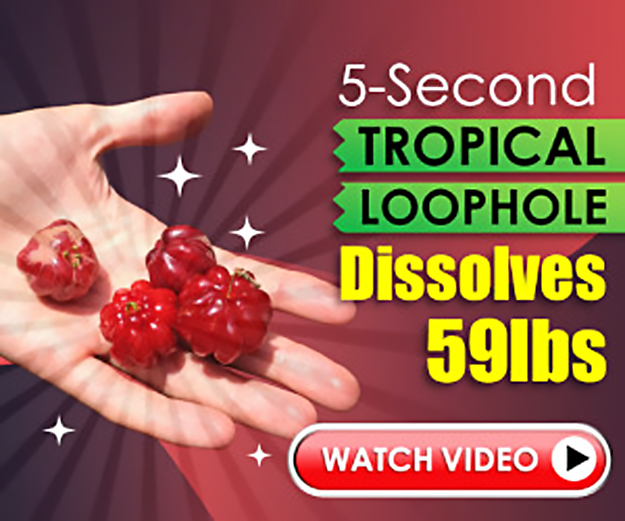


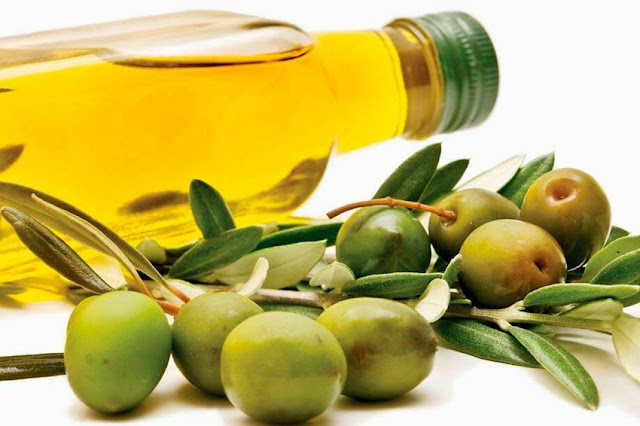
Comments
Post a Comment